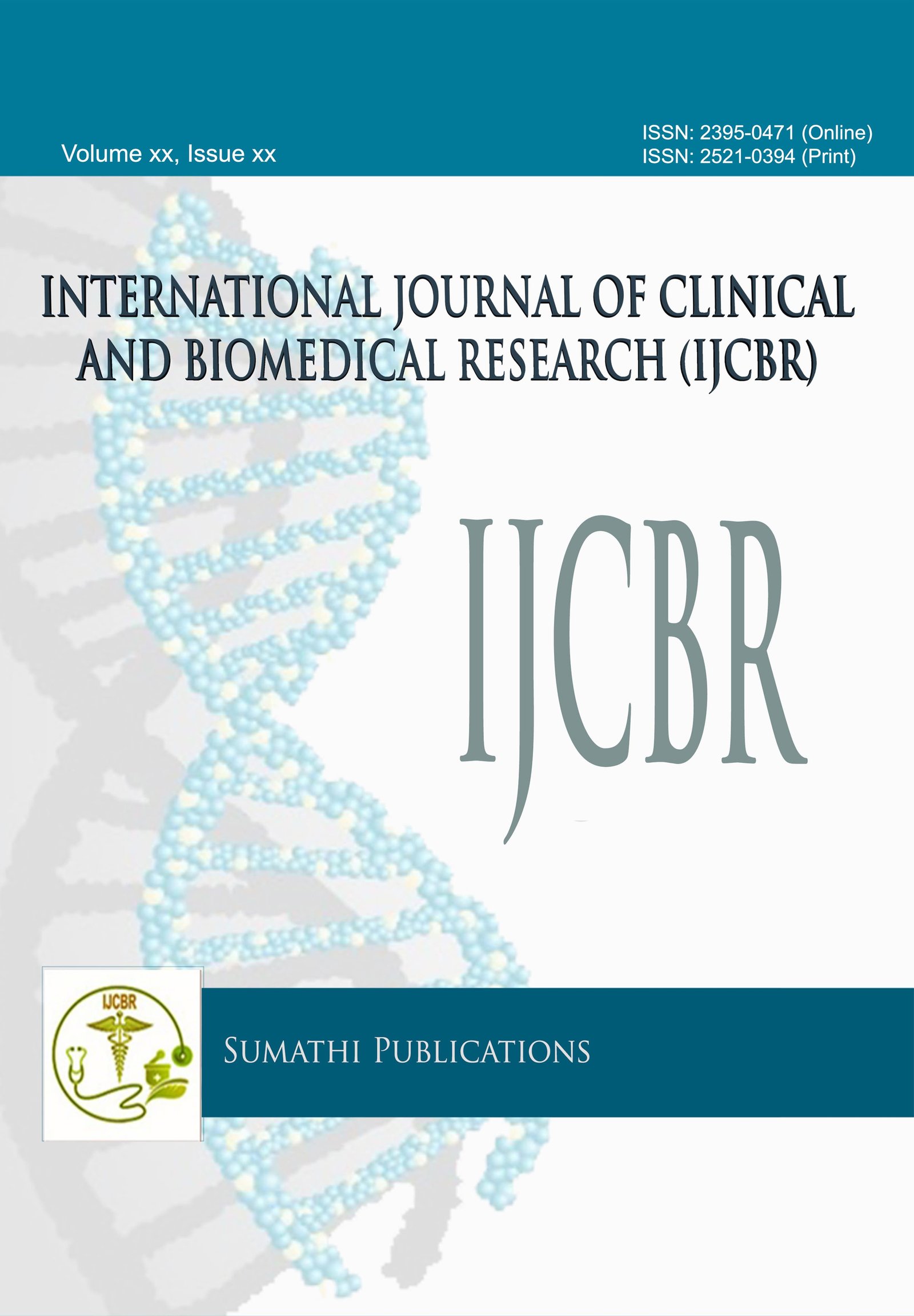INDOOR RADON SURVEY IN NEPAL USING PASSIVE TECHNIQUE SOLID STATE NUCLEAR TRACK DETECTOR
Abstract
Context: It has been proved from many epidemiological studies that the inhalation of the radioactive, inert gas radon (222Rn) is the main cause of lungs cancer after smoking. Objective: The survey was conducted to estimate the indoor radon concentration, the annual effective dose rate and the annual dose equivalent rate to the lung. Material and Methods: Altogether 50 dwellings were chosen randomly at 5 different districts of Nepal. The dosimetric measurements were carried out over a period of 3 months using time-integrated passive radon detectors, CR-39 based on type II Solid State Nuclear Track Detector (SSNTD) technique. The type of houses was concrete with plastered walls and mud house. Results: The minimum concentration of radon in the study areas was found to be <20Bq.m-3 and the maximum concentration was 110±20Bq.m-3. Also the corresponding values of annual effective dose and annual equivalent dose to the lung respectively varied from <0.60 to 3.30mSv.y-1 and 0.16—10-7 to 0.88×10-7 Sv.y-1. The uncertainty was measured at 95% confidence level. Conclusion: The indoor radon concentration varies considerably with the ventilation condition, lifestyle of the people, construction of the dwellings and climate of the areas. The measurements show that the radon concentrations were found to be well below the reference levels of ICRP.
KEYWORDS: Indoor Radon; Annual Effective Dose; CR-39; Ventilation Condition; Dwelling.
Downloads
Downloads
Published
Issue
Section
License
The journal allows the author(s) to hold the copyright without restrictions and will retain publishing rights without restrictions.
The submitted papers are assumed to contain no proprietary material unprotected by patent or patent application; responsibility for technical content and for protection of proprietary material rests solely with the author(s) and their organizations and is not the responsibility of the journal. The main (first/corresponding) author is responsible for ensuring that the article has been seen and approved by all the other authors. It is the responsibility of the author to obtain all necessary copyright release permissions for the use of any copyrighted materials in the manuscript prior to the submission.
What are my rights as an author?
It is important to check the policy for the journal to which you are submitting or publishing to establish your rights as
Author. Journal's standard policies allow the following re-use rights:
- The journal allows the author(s) to hold the copyright without restrictions.
- The journal allows the author(s) to obtain publishing rights without restrictions.
- You may do whatever you wish with the version of the article you submitted to the journal.
- Once the article has been accepted for publication, you may post the accepted version of the article on your own personal website, your department's website or the repository of your institution without any restrictions.
- You may not post the accepted version of the article in any repository other than those listed above (i.e. you may not deposit in the repository of another institution or a subject-matter repository) until 12 months after publication of the article in the journal.
- You may use the published article for your own teaching needs or to supply on an individual basis to research colleagues, provided that such supply is not for commercial purposes.





